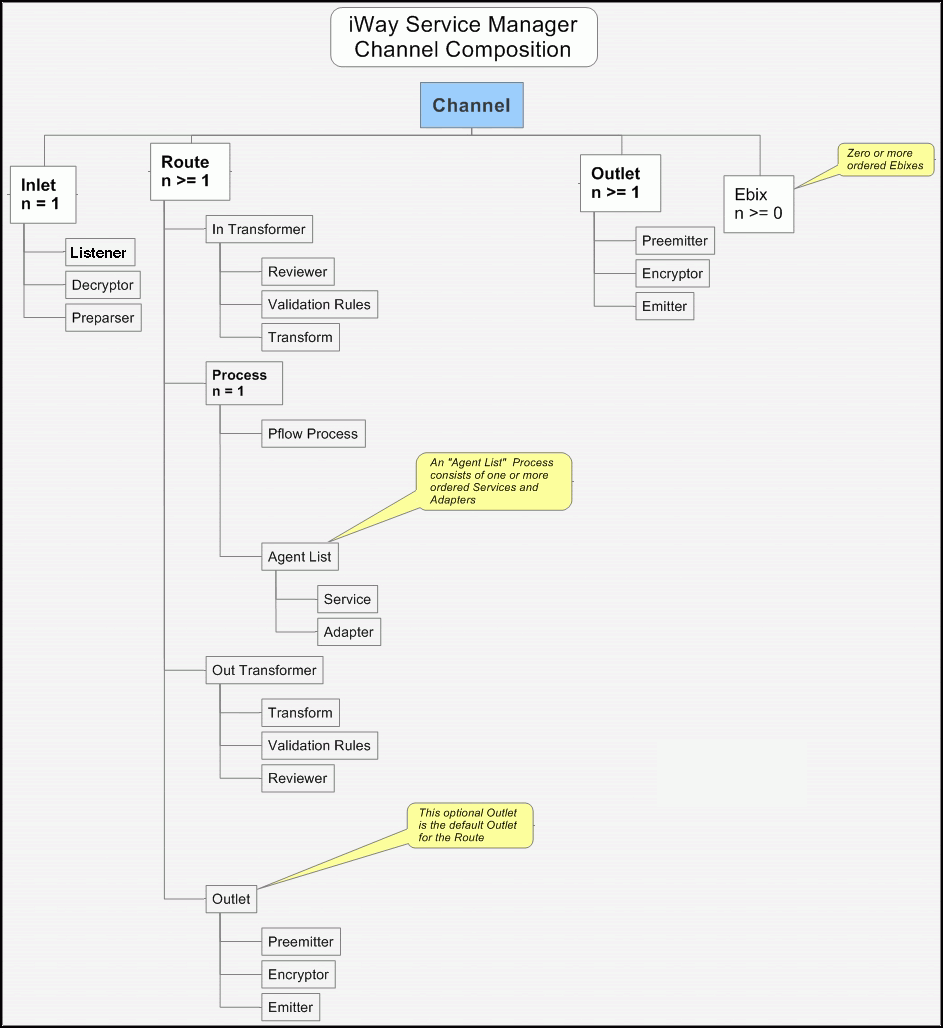Using a Channel to Construct a Message Flow
|
Topics: |
The following diagram shows the channel components available in the construction of a message flow.
The value n underneath a component name indicates how many instances of that component occur in a channel configuration (for example, zero, one, or more than one).
The required components are shown in bold.

Components of a Channel
A channel consists of:
- An inlet, which defines how a message enters a channel.
- A route, which defines the path a message takes through a channel.
- Outlets, which define how transformed messages leave a channel.
- Ebix files, which are collections of metadata that define the structure of data.
iSM provides a design-time repository called the Registry, where you assemble and manage the components in a channel.
Inlets contain:
- A listener, which brings the incoming message into the channel.
- Decryptors, which apply a decryption algorithm to an incoming message and verifies the security of the message.
- Preparsers, which convert incoming messages to XML.
Routes contain:
- Transformers
- Reviewers
- Validation rules processors
- Process flows (pflow). This stateless, lightweight, short-lived microflow is executed to carry a message through processing. Pflows are created using iWay Integration Tools (iIT) and are persisted to the Registry.
- Java services, which handle the business logic of processing a message.
- Adapters, which are used to connect to back-end systems.
Outlets contain:
- Preemitters.
- Encryptors.
- Emitters.
For more information on all of these components, see the iWay Service Manager User's Guide.